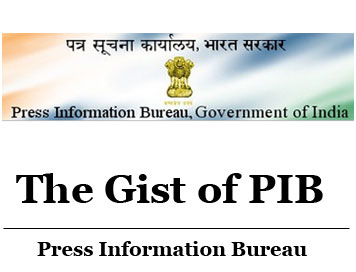(HOT) UPSC Current Affairs 2025 PDF
NEW! The Gist (NOV-2025) | E-BOOKS
(The Gist of PIB) Tuting-Tidding Suture Zone (TTSZ)

(The Gist of PIB) Tuting-Tidding Suture Zone (TTSZ)
[August-2020]
Tuting-Tidding Suture Zone (TTSZ)
- A study in the Tuting-Tidding Suture Zone (TTSZ) in the Eastern Himalayas, Arunachal Pradesh, has revealed that the area is generating moderate earthquakes at two different depths.
About:
- The study is led by the Wadia Institute of Himalayan Geology (WIHG) an autonomous institute of the Department of Science & Technology (DST), Government of India.
- The study aims to explore the elastic properties of rocks and seismicity in this easternmost part of India.
Key highlight of the study:
- Low magnitude earthquakes are concentrated at 1-15 km depth, and slightly higher than 4.0 magnitude earthquakes are mostly generated from 25-35 km depth.
- The crustal thickness in this area (TTSZ) varies from 46.7 km beneath the Brahmaputra Valley to about 55 km in the higher elevations of Arunachal, with a marginal uplift of the contact that defines the boundary between crust and the mantle technically called the Moho discontinuity.
- This reveals the underthrusting mechanism of Indian plate in the Tuting-Tidding Suture Zone.
- Extremely high Poisson’s ratio was also obtained in the higher parts of the Lohit Valley, indicating the presence of fluid or partial melt at crustal depths.
- Poisson's ratio is a measure of the Poisson effect that describes the expansion or contraction of a material in directions perpendicular to the direction of loading.
Importance of the study:
- That results predominantly from reverse faults in which the rocks on the lower surface of a fault plane move under relatively static rocks on the upper surface, a process called underthrusting of the Indian plate beneath its Eurasian counterpart.
- This process keeps modifying the drainage patterns and landforms and is the pivotal reason for causing an immense seismic hazard in the Himalayan mountain belt and adjoining regions.
- This has necessitated assessment and characterization of earthquakes in terms of cause, depth and intensity before construction activities are initiated.
TTSZ:
- It comprises a major part of the Eastern Himalaya, where the Himalaya takes a sharp southward bend and connects with the Indo-Burma Range.
- This part of the Arunachal Himalaya has gained significant importance in recent times due to the growing need of constructing roads and hydropower projects, making the need for understanding the pattern of seismicity in this region critical.
CLICK HERE TO DOWNLOAD FULL PDF
Study Material for UPSC General Studies Pre Cum Mains
This is Only Sample Material, To Get Full Materials Buy The Gist 1 Year Subscription - "Only PDF" Click Here
Click Here to Download More Free Sample Material
Courtesy: PIB

